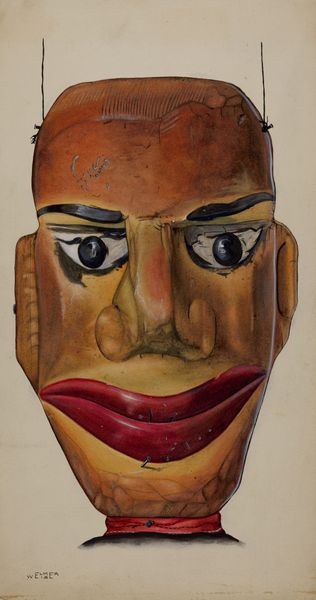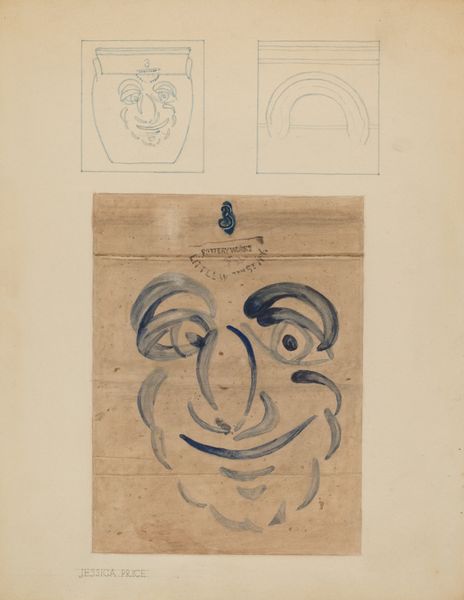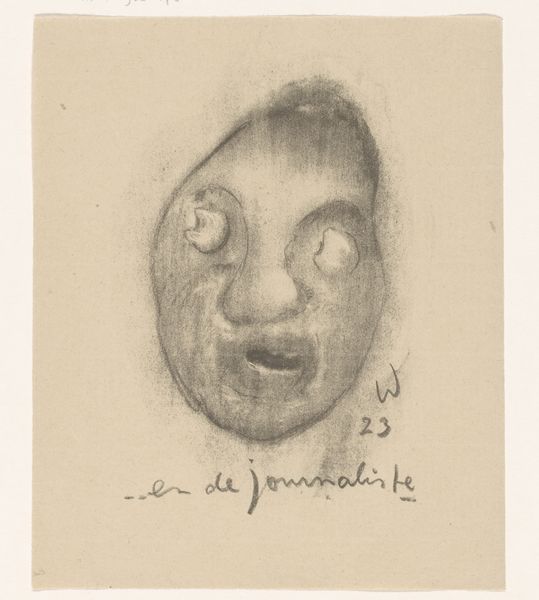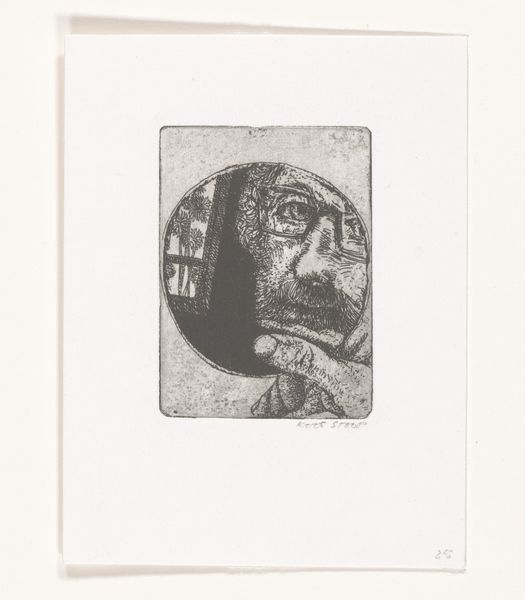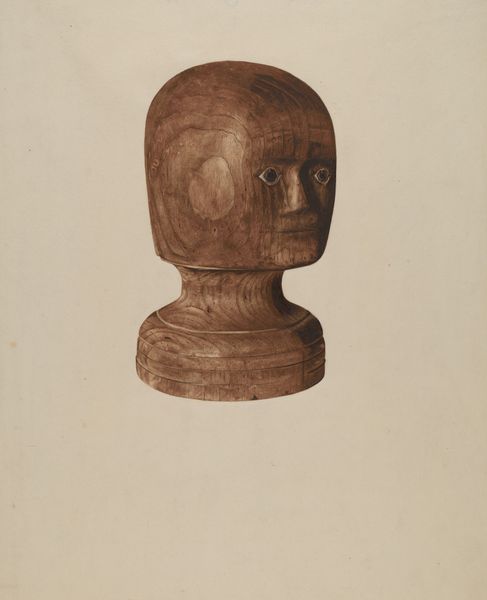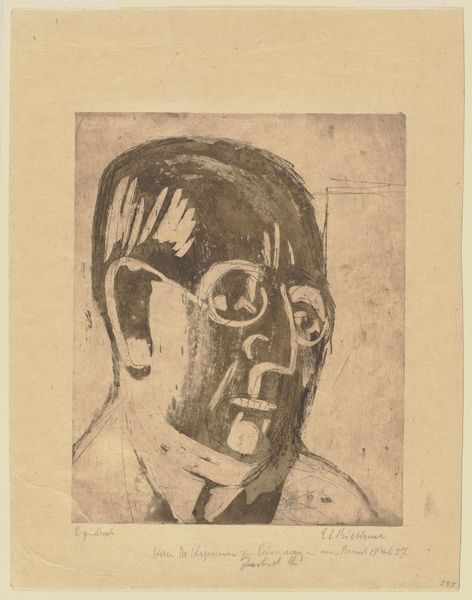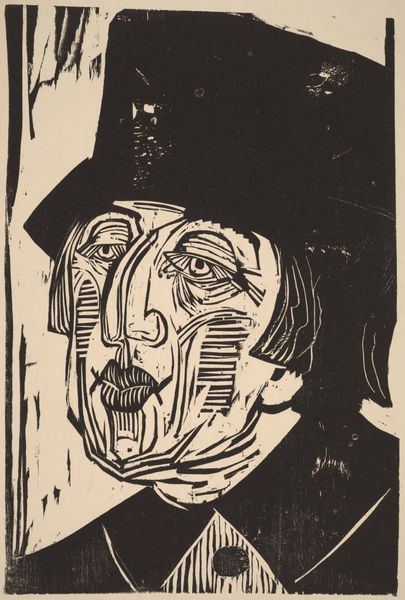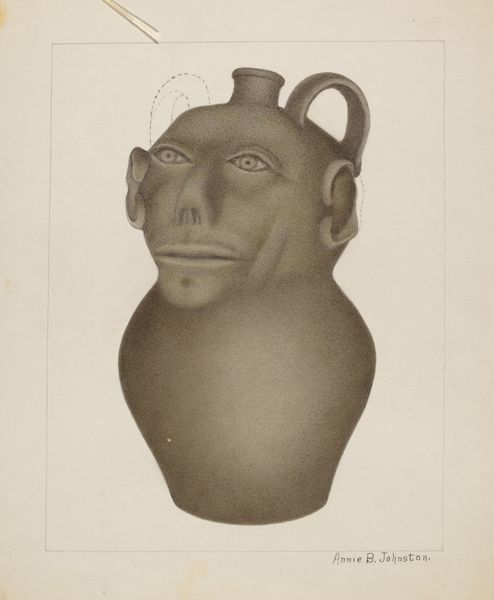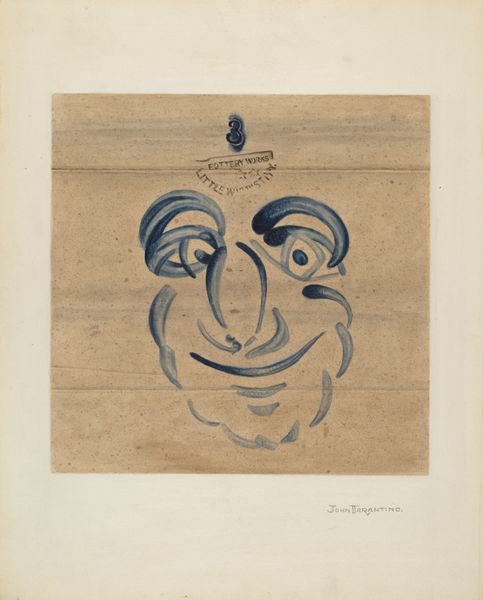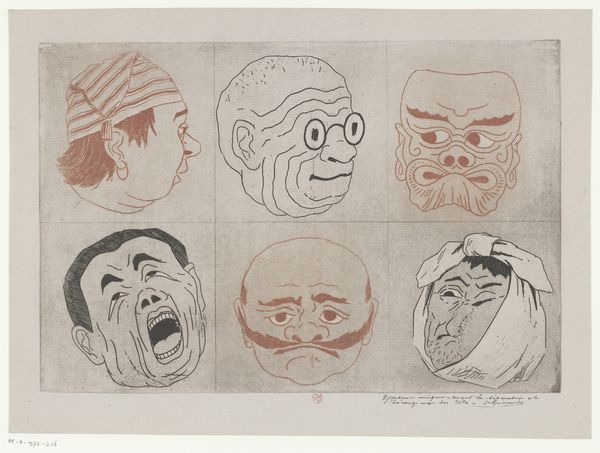
Dimensions: height 307 mm, width 217 mm
Copyright: Rijks Museum: Open Domain
Curator: Here we have Henri-Charles Guérard's graphite drawing of a Japanese theater mask. It's from somewhere between 1856 and 1897, and it’s currently held here at the Rijksmuseum. Editor: Wow, it’s intense! Those empty eye sockets juxtaposed with that really exaggerated grin—it makes you wonder what emotion it’s supposed to evoke. There's almost a dark humor in the drawing's sharp contrasts. Curator: Absolutely! It likely represents a specific character in Noh theater, where masks like these serve a profound function. Noh drama often features spirits and demons, beings with complex natures. This mask, crafted of lacquered wood, speaks to an entire performative tradition, doesn't it? Think about how such a mask influences posture, vocal projection—the actor literally embodies the spirit it depicts. Editor: I immediately zeroed in on the lacquered wood itself, which suggests considerable labor went into its production. I mean, how many steps are involved? The carving of the wood, the careful layering of lacquer—not to mention the social function the mask served within its original community! It isn’t just art; it's cultural labor manifested into an object. Curator: Exactly. Masks aren’t passive objects. Across cultures, they symbolize transformation, hidden identities, ways to access different states of being. And within Japanese culture particularly, a theatrical mask links one generation of performers to the next. Its symbolism can be traced back centuries. Editor: And it begs the question—did Guérard appreciate all this when he chose to represent the mask in a drawing? Was he thinking about the original craftsmanship, its place within a larger industry of performance, or merely the mask’s visual properties? Curator: I suspect both. As a skilled artist, he'd undoubtedly respond to the formal qualities – the play of light on the lacquered surface, the expressive distortion of the features. But the act of copying itself can also be an act of cultural exchange, even appropriation. Editor: I hadn't thought of it that way. For me, knowing the mask's purpose is really interesting and enhances the caricature itself. The social relations embedded within this object’s story give the caricature added layers. Curator: For me, the enduring power of masks resides in their capacity to distill complex emotions and ideas into a single, potent image. It is striking to experience these deep symbols across different eras. Editor: Indeed. Thanks for shining a light on this very striking artwork.
Comments
No comments
Be the first to comment and join the conversation on the ultimate creative platform.
